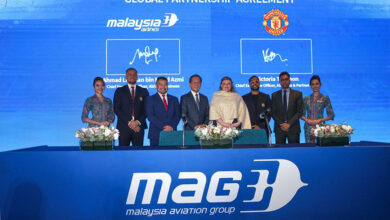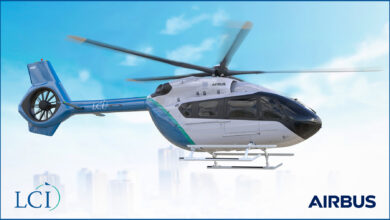Slowing Demand and Rising Costs Squeeze Airline Profits
Geneva. The International Air Transport Association (IATA) announced a downgrade of its 2019 outlook for the global air transport industry to a $28 billion profit (from $35.5 billion forecast in December 2018). That is also a decline on 2018 net post-tax profits which IATA estimates at $30 billion (re‑stated).

The business environment for airlines has deteriorated with rising fuel prices and a substantial weakening of world trade. In 2019 overall costs are expected to grow by 7.4%, outpacing a 6.5% rise in revenues. As a result, net margins are expected to be squeezed to 3.2% (from 3.7% in 2018). Profit per passenger will similarly decline to $6.12 (from $6.85 in 2018).
“This year will be the tenth consecutive year in the black for the airline industry. But margins are being squeezed by rising costs right across the board—including labor, fuel, and infrastructure. Stiff competition among airlines keeps yields from rising. Weakening of global trade is likely to continue as the US-China trade war intensifies. This primarily impacts the cargo business, but passenger traffic could also be impacted as tensions rise. Airlines will still turn a profit this year, but there is no easy money to be made,” said Alexandre de Juniac, IATA’s Director General and CEO.
In 2019, the return on invested capital earned from airlines is expected to be 7.4% (down from 7.9% in 2018). While this still exceeds the average cost of capital (estimated at 7.3%), the buffer is extremely thin. Moreover, the job of spreading financial resilience throughout the industry is only half complete with a major gap in profitability between the performance of airlines in North America, Europe and Asia-Pacific and the performance of those in Africa, Latin America and the Middle East.
“The good news is that airlines have broken the boom-and-bust cycle. A downturn in the trading environment no longer plunges the industry into a deep crisis. But under current circumstances, the great achievement of the industry—creating value for investors with normal levels of profitability is at risk. Airlines will still create value for investors in 2019 with above cost-of-capital returns, but only just,” said de Juniac.

2019 Outlook Drivers
Costs:
The high price of fuel from 2018 ($71.6/barrel Brent) will continue in 2019 with an average cost of $70.00/barrel Brent expected. This is 27.5% higher than the $54.9/barrel Brent in 2017. Fuel costs will account for 25% of operating costs (up from 23.5% in 2018).
Non-fuel unit costs are expected to rise to 39.5 cents per available tonne kilometer from 39.2 cents, because of higher labor, infrastructure and other costs.
Overall expenses are expected to rise 7.4% to $822 billion.
Revenues:
Overall revenues are not keeping pace with the rise in costs. For 2019, total revenues of $865 billion are expected (+6.5% on 2018).
Cargo:
After an exceptional performance in 2017 (+9.7% growth), cargo demand growth slowed to 3.4% in 2018. It is anticipated to be flat in 2019 with cargo volumes of 63.1 million tonnes (63.3 million tonnes in 2018) because of the impact of higher tariffs on trade.
Cargo yields are expected to be flat in 2019 after a 12.3% improvement in 2018, as cargo load factors fall further, and supply-demand conditions weaken.
Passenger:
Passenger demand growth is expected to be more robust than for cargo. This is because global GDP growth is expected to remain relatively strong at 2.7%, albeit slower than in 2018 (3.1%). Governments and central banks have responded to slower economic growth with more supportive policies, which is providing an offset to trade weakness. But economic growth and household incomes will still grow more slowly, so total passenger demand, measured in revenue passenger kilometers, is expected to grow by 5.0% (down from 7.4% in 2018). Airlines have responded to the slower growth environment by trimming capacity expansion to 4.7% (ASKs).
Total passenger numbers are expected to rise to 4.6 billion (up from 4.4 billion in 2018).
Passenger yields are expected to remain flat in 2019 after a 2.1% fall in 2018.
Cash Flow:
Free cash flow, which enables investors to be paid and debt to be reduced, is expected to disappear at the industry level because cash from operations will be reduced by slower demand growth and higher costs. Debt-to-earnings ratios, which had fallen significantly are starting to rise once more.
Average debt-to-earnings ratios for airlines in Europe and North America are not far above the levels rated as investment grade by the credit rating agencies, which provides a degree of security in the event of a deterioration in the business environment. Africa, Middle East and Latin America still have high levels of debt (6-7 times annual earnings) which leaves them more vulnerable to cash flow shocks (increasingly likely) or rising interest rates.
Risk factors:
Downside risks are significant. Political instability and the potential for conflict never bodes well for air travel. Even more critical is the proliferation of protectionist measures and the escalation of trade wars.
As the US-China trade war intensifies, the immediate risks to an already beleaguered air cargo industry increase. And, while passenger traffic demand is holding up, the impact of worsening trade relations could spillover and dampen demand.
“Aviation needs borders that are open to people and to trade. Nobody wins from trade wars, protectionist policies or isolationist agendas. But everybody benefits from growing connectivity. A more inclusive globalization must be the way forward,” said de Juniac.
Regional Roundup
All regions are expecting a reduction in profitability with the exception of North America and Latin America. Regional differences are significant.
North American carriers will deliver the strongest financial performance with a $15 billion post tax profit (up from $14.5 billion in 2018). That represents a net profit of $14.77 per passenger, which is a marked improvement from just 7 years earlier ($2.3 in 2012). Net margins, forecast at 5.5%, are down from 2018 levels owing to higher than expected fuel costs and slowing growth. The limited downside in this region has been underpinned by consolidation, helping to sustain load factors (passenger + cargo) above 65%, and ancillaries, which limit the impact of higher fuel costs, keeping breakeven load factors to 59.5%.
European airlines will deliver a net profit of $8.1 billion (down from $9.4 billion in 2018). That represents a net profit per passenger of $6.75 and a net margin of 3.7%–both are the second strongest industry results, but below what North American carriers earn. Breakeven load factors are the highest at 70.2%, caused by low yields due to the highly competitive open aviation area, high regulatory costs, and inefficient infrastructure. In 2019, for example, en-route air traffic management delays doubled to 19.1 million minutes. Europe also is one of the more exposed regions to weak international trade and this has damaged prospects this year.
Asia-Pacific airlines will deliver a net profit of $6.0 billion (down from $7.7 billion in 2018). That represents a net profit per passenger of $3.51 and a net margin of 2.3%. The region is showing very diverse performance. Accounting for about 40% of global air cargo traffic makes the region the most exposed to weakness in world trade, and that, combined with higher fuel costs, is squeezing the regions’ profits.
Middle Eastern airlines will deliver a combined net loss of $1.1 billion (slightly worse than the $1.0 billion loss in 2018). That equates to a $5.01 loss per passenger and a negative net margin (-1.9%). The region has faced substantial challenges in recent years, both to the business environment and to business models. Airlines there are going through a process of adjustment and announced schedules point to a substantial slowdown in capacity growth in 2019. Performance is now improving but the worsening in the business environment is expected to prolong losses in 2019.
Latin American airlines will deliver a net profit of $0.2 billion. This reflects a moderate improvement from the $0.5 billion loss in 2018, as the recovery of the Brazilian economy is offsetting higher oil prices. With a $0.50 profit per passenger, the region’s net margin is expected to be a thin 0.4%.
African airlines will deliver a $0.1 billion loss (unchanged from 2018), continuing a weak trend into its fourth year. Each passenger carried is expected to cost the carriers $1.54, leading to a -1.0% net margin. Breakeven load factors are relatively low, as yields are a little higher than average and costs are lower. However, few airlines in the region are able to achieve adequate load factors, which averaged the lowest globally at 60.7% in 2018. Overall, industry performance is improving, but only slowly.
Regional Summary

The Business of Freedom
“Aviation is the business of freedom. For 4.6 billion travelers it is their freedom to explore, build business, or reunite with friends and family. The economic benefit of this is 65 million jobs and a $2.7 trillion boost to the global economy. Aviation is growing responsibly to meet this demand. From 2020, for example, the industry will achieve carbon-neutral growth. And that is on the way to the much more ambitious goal of cutting emissions to half 2005 levels by 2050. We are determined to deliver sustainable global connectivity through aviation,” said de Juniac.
Some key indicators of the strength of global connectivity include:
- The 2019 average return airfare (before surcharges and tax) is expected to be $317 (2018 dollars), which is 61% below 1998 levels after adjusting for inflation. It is also $10 lower than in 2018 in real terms.
- Average air freight rates in 2019 are expected to be $1.86/kg (2018 dollars) which is a 62% fall on 1998 levels.
- The number of routes served by aviation is forecast to grow to over 58,000 in 2019, up from 52,000 in 2014.
- The global spend on tourism enabled by air transport is expected to grow by 7.8% in 2019 to $909 billion.
- Airlines are expected to take delivery of more than 1,770 new aircraft in 2019, many of which will replace older and less fuel-efficient aircraft. This will expand the global commercial fleet by 3.67% to over 30,697 aircraft. This will help improve fuel efficiency by 1.7% to 22.4 liters/100 available tonne kilometers.





